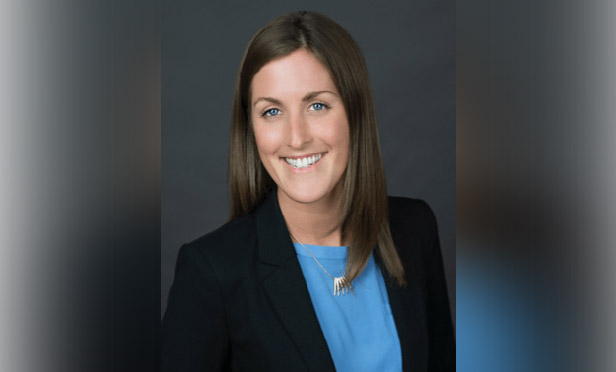 Jen Butler of Corporate Insight.
Jen Butler of Corporate Insight.
Digital advice providers, or robo-advisors, have found greatsuccess as measured by the number of users and the assets they haveattracted. But recent research by Corporate Insight suggests thateven the largest standalone robos and those bolted onto existingfinancial services platforms are missing the boat in substantialways when it comes to meeting the preferences of their targetedcustomers.
|Jen Butler, senior analyst, explained that the “core of what wedo” at Corporate Insight is to explore the digital user experienceof, for example, banks and insurers. Those companies might hireCorporate Insight to assess their specific offerings usingtraditional market research. The company also follows an 'audit'process of all the offerings in a market vertical, surveyingmultiple companies and its customers and comparing each company'sstrengths and weaknesses vis-a-vis their competitors with theinsights of their customers, creating benchmarking analysis for itsclients.
|But Corporate Insight then unearths some of its most tellinginsights by opening “live funded accounts” at all those companies,Butler said. That, she says, allows the firm to directly “get theuser experience,” which supplements its survey data.
|In late April, Corporate Insight released its Digital AdviceAudit service, which benchmarks a specific firm's digital adviceuser experience. The service is partly built on the findings of alate 2018 survey of 1,100 digital advice customers and prospectsthat collected data on customers' expectations, behaviors,preferences and satisfaction with their provider's technology andoverall service.
|So what findings from the audits and the survey are of interestto advisors or broker-dealers who might want to partner with an“startup” robo-advisor that white-labels its offerings or use abroader platform service like Schwab's Institutional IntelligentPortfolios?
|First, making that robo partnership decision could be importantfor individual RIA firms and BDs, says Butler, since the industryis reaching a “level of parity” that makes it difficult forindividual advisors to compete, unless “they want to compete onprice, which is continually compressing.”
|The benchmarking data suggests many robo websites fall short inmeeting user expectations in areas like goal planning andeducation. There is a line firms have to “walk between finding waysto get people engaged in the advice process, but alsodisincentivize too much engagement” so users don't pull out theirassets willy-nilly at times of market volatility, she said. A“pure” robo (i.e., one without human advisors) like Wealthfrontwalks that line, Butler said, by focusing on its Pathaggregation-based multi-goal planning tool that's easy to use andallows users to mark progress toward multiple goals.
|By contrast, 'incumbent' providers like Fidelity, Vanguard andSchwab started their downstream, digital advice offerings as adefensive measure to serve the mass affluent, Butler pointed out.So their user experience is more focused on efficiently creatinginexpensive portfolios and features like automatic tax lossharvesting.
|Here's another trend. Startup robos are starting to offer“freemium” access, which includes, in Personal Capital's case, a“robust” aggregation-based analysis tool that links to held-awayassets to discover any issues — e.g., improper asset allocation orhigh fees — within a user's overall portfolio. It then makessuggestions to move those assets to the user's Personal Capitalaccount to remedy the issue. While that could be a benefit tousers, Butler points out that “it remains to be seen” whether theSEC would consider those suggestions “advice.”
|Another shortcoming identified by Corporate Insight's survey wasmobile functionality. While robo customers tended to assign higherimportance to their provider's website, 73% of users surveyed saidit was either “very important” or “extremely important” to providea mobile app. There is opportunity to improve those apps, Butlersaid, especially because not many providers even offer mobile apps.Instead, the functionality is embedded into “what is essentially amobile trading app,” she said.
|The startup providers tend to offer the best standalone apps,Butler said, though Schwab's Intelligent Portfolios' app is “veryintuitive and usable.”
|Perhaps not surprisingly, Butler reported that the majority ofthe users surveyed who said a mobile app was highly important weremillennials. But then again, the average age of the users surveyedwas 42, and many fell into the demographic segment of HENRYs — HighEarners Not Rich Yet.
|One final finding might not provide much comfort to advisors whoworry about robos taking away their livelihood. In its survey,Corporate Insight asked users of hybrid offerings — which combinerobo-advice with access to human advisors — whether they had usedhuman advisors before; 76% said they had. The survey then askedwhether those robo-affiliated human advisors were better or worsethan their previous advisors; 68% said their new advisors werebetter.
Complete your profile to continue reading and get FREE access to BenefitsPRO, part of your ALM digital membership.
Your access to unlimited BenefitsPRO content isn’t changing.
Once you are an ALM digital member, you’ll receive:
- Critical BenefitsPRO information including cutting edge post-reform success strategies, access to educational webcasts and videos, resources from industry leaders, and informative Newsletters.
- Exclusive discounts on ALM, BenefitsPRO magazine and BenefitsPRO.com events
- Access to other award-winning ALM websites including ThinkAdvisor.com and Law.com
Already have an account? Sign In
© 2024 ALM Global, LLC, All Rights Reserved. Request academic re-use from www.copyright.com. All other uses, submit a request to [email protected]. For more information visit Asset & Logo Licensing.








